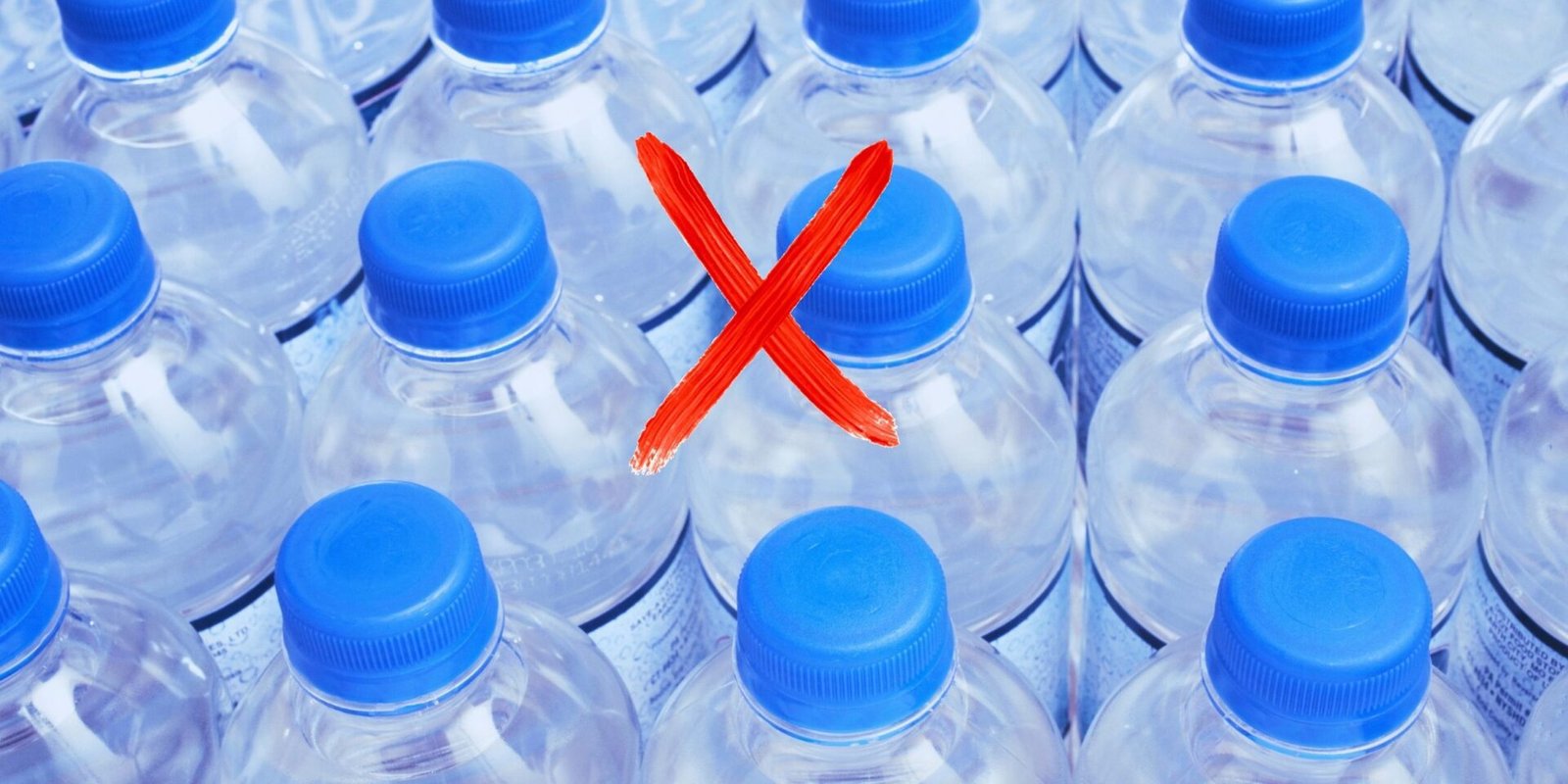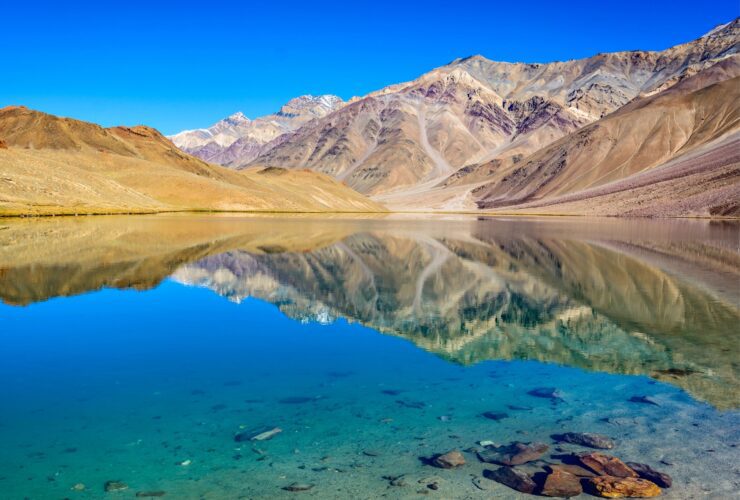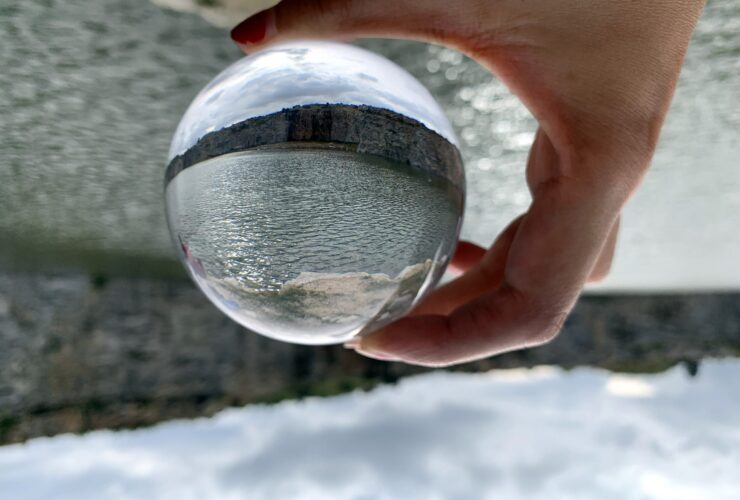What is single use plastic?
Single use plastic is meant for one-time use i.e. use and throw. For example, water bottles, straws, plastic cups, milk packets, biscuit wrappers, and many other food wrappers, etc.
Single use plastic bottle – how many of you still buy it?
I have been thinking that people who carry their water bottles instead of buying single use plastic bottle are a minority, but I got surprised by the response when I polled the same in our community “Women Tours in India“. Almost 77% voted for “carry their own bottle” while the remaining 23% voted for “buying the single use plastic bottles” while traveling. Among this 23%, some of them commented that after reading my posts that encouraged people to carry their own refillable water bottle, they would also try to implement the same. Almost 200 people participated in this poll which, although, is a very small sample size to generalize anything. Moreover, I also understand that many people who buy single use plastic bottles may not have responded to the post. But at least it looks like enough data for a discussion.
I have been carrying my own refillable water bottle for the last 6 years.
WHY did I ditch single use plastic bottles and carry my own refillable bottle?
1. Single use plastic is the cause of increasing plastic pollution

We all know very well that how single use plastic bottles cause plastic pollution. The plastic waste ends up in oceans, rivers, landfills, choking drains, and creating stinky garbage dumps in towns & cities. When we buy a water bottle, do we even think where this plastic bottle would end up? Do we know that if not recycled, it would take another 500 years to get decomposed? Did you know that 8 million tonnes of plastic waste are added to the oceans every year, killing 100 million marine animals each year?
2. Single use plastic also kills touristy destinations

We all love to travel to beautiful destinations and be close to nature. Do you want this gift of travel to be snatched away from us? Finding stinking heaps of plastic pollution at touristy places has become common. My experience at Alleppey backwaters grossed me out when I saw a few plastic bottles floating along with my canoe. Many destinations are losing their charm because of plastic pollution. Being a Responsible Tourism practitioner and a passionate traveler, I would always want to preserve their pure air and beauty.
3. Single use plastic is unhealthy
If we leave the water bottle in the car, then sunlight falls over the plastic making it release cancer-causing elements in the water. “I will buy the water, but would always keep it under shade.” one might say. How do we know if the bottle wasn’t exposed to the direct sun during its entire distribution chain? Many people deny this fact, especially the bottled water manufacturing companies, and a few institutions as well. However, I choose to believe this I have had this discussion with many people in the medical industry. Moreover, ain’t we also seeing the increasing rate of cancer? I will go the extra mile and take a precaution rather than just laughing off the facts.
4. Maintenance of water temperature in a refillable bottle
If I am traveling across a warm region, I would fill my bottle with cold water. If I am in a cold region, I would fill my bottle with hot water. The latter is extremely important for me as it saves me from falling sick. Moreover, drinking warm water helps a lot with acclimatization and aids digestion at high altitudes. I always carry my Milton Thermosteel for the same because these bottles maintain the temperature of water for very long hours. I can never have this luxury of hot & cold water single use plastic bottle.
5. Ambassador of Responsible Tourism
I am the founder of Transforming Travels, where we encourage travelers to follow responsible tourism practices on our trips and outside our trips as well. Being a founder, I must practice what I preach.
6. Carrying my own bottle saves some bucks
The icing on the cake is that I also get to save some bucks with all the above benefits. You must be wondering that a water bottle just costs 25 INR which isn’t much. But try adding up the amount of money you spend on water bottles in an entire year. If you are a frequent traveler, the amount would equate to the cost of a nice room for one night.
Tip: If you are finding it hard to carry your own bottle, then motivate yourself by using the money spent on single use plastic bottles to pamper yourself with something you like, during your last trip of the year. It could be a massage in a fancy spa, a lavish meal, or a nice accommodation for one night.
Carry water bottle from home: Learning from family trips
“Keep a water bottle” always said my mom while leaving even for the shopping trips. In fact, during my childhood, if it’s a long train journey, my parents even used to carry a 20 L Milton Camper that would sustain us throughout the journey. I used to find it so inconvenient. “Why don’t we just buy water bottles, use and throw them away?” I always wondered in my mind. Not just water, they also carry home-cooked food in steel containers. Few years down the road, everything my parents packed for trips started making sense to me. Now I realize that our single use plastic waste generated on those trips used to be minimal.
I am sure many of you can relate to the above-mentioned situation. Probably, because the earlier generations gave preference to nature & health over convenience, and were not a victim of a fast-paced life.
HOW did I say NO to the use of single use plastic bottle?
If I wasn’t traveling with my family during my college years, I was a buy-bottled-water person. Even if I tried carrying mine with the motivation of saving some money, either it would trouble me by leakage or it would get lost. A couple of years later, I found myself carrying my refillable water bottle very religiously. It’s been 6 years since that transformation.
I would like to share 2 incidents that played a key role in converting me from a buy-bottled-water person to a carry-your-own.
1. The Meghalaya trip
In May 2015, I backpacked to Meghalaya for 2 weeks with my friends, with a budget of 10,000 INR per person. The mentioned budget also included our sleeper class train tickets between Delhi & Guwahati, both ways. Just imagine surviving sleeper class in May heat during the train journeys of 35+ hours one way. We bought countless bottles of water. In the end, while settling expenses with each other, we realized that the cost of the water had come out to be a whopping 1000 INR per person.
A trip where four of us stayed in one room, used public transportation, ate from the cheap food joints, but felt so privileged to spend 10% of the total budget on single use plastic water bottles? If we had planned better, we could have carried our own bottles and refilled them easily. We could have used that money somewhere else.
2. Alleppey backwaters
How desperate was I to experience the backwaters of Alleppey? It sits on the bucket list of almost every traveler. However, my Alleppey backwater experience didn’t meet its fairytale ending. I booked a canoe ride for myself to experience the backwaters thinking that being a low-height boat, it would give me a close-up experience with water as compared to a houseboat. I was ready to sail in the beautiful canoe, click photos, and even brush my fingers through the water. Little did I know that I would have the companionship of floating plastic bottles in some stretches. I was very disheartened. “But these bottles are the souvenirs left by the tourists like us only,” I thought later. After my Alleppey experience, I never bought a single use plastic water bottle unless it’s an emergency or there is no refilling option available.
How have I been managing carrying my refillable water bottle?
Trust me, it’s not as difficult as it may sound. Here is how I have been managing to carry and refilling my own water bottle for the last 6 years:
1. Invest in a good water bottle
The first & foremost thing one needs to do is invest in a good water bottle. Earlier, I used to buy cheap water bottles from the supermarket where a set of 3 bottles would cost 100 INR. They used to be cute bottles, but the trouble was not worth it. Leakage used to be an issue. Also, such bottles ain’t good for storing very hot/ cold liquids. Hence, I invested in a Milton Thermosteel bottle. It costs around 1000 INR but totally worth the money. There is no leakage and it’s specially designed to maintain the temperature of hot/ cold liquids for 12 hours (although, the label says 24 hours). You can also explore other brands to find a bottle of your choice.
2. Carry a water bottle in the daypack
No one wants to walk around with one hand reserved by the water bottle. I always put my bottle in my daypack without worrying about leakage as I have a branded water bottle. If you see the above photo, then this 10 L backpack costs only 399 INR from Decathlon. I got mine for 199 INR on sale. It’s been a best friend to my bottle for years.
Also, when I used to carry those leaky bottles, I used to lose them often because I could not keep them in my bag.
3. Refilling
I refill my water bottles every morning from the dining hall or the water jug given in the room. If it’s not the filtered water, but I am staying in a Himalayan region, then I am absolutely good with tap water. Because tap water in the Himalayan regions is actually spring water which is even healthier than the RO filtered water or bottled water. Once we are out of the property for the day excursion, I need to replenish the water after a few hours. The best option is to fill it in from the place where I am having lunch. If I am undertaking a train journey or at the airport, then I would look for the drinking water dispenser.
Challenges in refilling
While traveling across India, I have faced a slight challenge in refilling in Rajasthan because as per my observation, very few properties have an RO filter there. I can’t quench my thirst with tap water because it tastes very different. In such cases, I buy bottled water but dispose it of properly. We work with a homestay in Jodhpur where they would always ask their guests to return the bottles to them so that they could be sent for recycling.
Note:
Many people facing digestive problems during a Rajasthan trip. It happens because of the heat and traditionally, Rajasthani food is heavy on the stomach. One of the hosts told me that one should drink tap water in Rajasthan for better digestion. Probably, some minerals in the water aid digestion of local food. Hence, I always try to drink some tap water every day when I am there so that I can slowly get used to that water.
5. More Buying exceptions
While I have been spreading the message of carrying your own refillable water bottle, I have also been guilty of buying bottled water a few times in the last 6 years. Apart from the Rajasthan case, there have been times when I forgot my bottle at the property and left for the day. It doesn’t happen a lot. If I talk about frequency, then probably once a year. But whenever I buy them, I make sure to dispose of them properly instead of randomly leaving them anywhere.
Single use plastic bottles can be recycled. So, what’s the issue?
I agree that single use plastic bottles can be recycled. But do we know what percentage of this plastic is actually recycled?
Let’s just look at a few quick facts to understand the gap between the usage of single use plastic and its recycling:
- Almost 79 % of the total plastic produced in the world enters our environment as waste. Out of this, only 9 % is recycled.
- India alone accounts for 9.46 million tonnes of plastic waste annually.
- Indian industry claims to recycle 60% of plastic waste. However, research institutions and organizations working at ground level defy this claim. As per them, if 60% of the plastic waste was recycled in India, why do we see so much plastic pollution everywhere?
The problem with recycling is a very inefficient waste collection & management system. While throwing a bottle in the dustbin, do we even know if it would meet its fate of recycling or not?
What if I reuse my single use plastic water bottle?
The water bottles used for packing water are PET bottles i.e. polyethylene terephthalate. Just see the bottom of your bottle and you would find this logo:
Such bottles are possible to recycle but don’t have much usage life. You can use them to store water for a maximum of 2 weeks once you have opened it. After a few days, they began to experience bacterial growth.
Hence, single use plastic is not much durable. You can find alternative uses though, such as growing plants & herbs in them or making some decorative art out of them.
What matters: Convenience of using single use plastic or health & environment?
It’s our time to decide whether we want to surrender to our fast-paced life’s convenient needs or want to place the environment & health at a higher priority? Please note that nature and our health are always in tandem. If nature around us is happy and blooming, then only we would be able to attain good health. Hence, if not for nature, then can we selfish humans reduce our plastic waste, at least for ourselves?
Can we take a pledge to minimize our usage of single use plastic bottles? I know it may not be possible to eliminate them from your life right now, right away, but baby steps can be taken no?
Going the extra mile…
Can we go the extra mile? Along with plastic bottles, can we also minimize the usage of other single use plastic items such as straws, disposable cups, junk food wrappers, etc? These small pieces are extremely tough to recycle as they get stuck in the crevices of the machines. Mostly, they are refused by recycling centers. Though we didn’t discuss how to manage without them in this blog to keep things simple, I am sure that you are a conscious person if you stayed till the end of the article. Hence, you would definitely find your ways to manage without single plastic items.
What are your thoughts? Do you have any other suggestions to avoid single use plastic bottles while traveling? Let’s discuss this in the comments.





